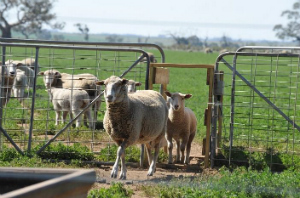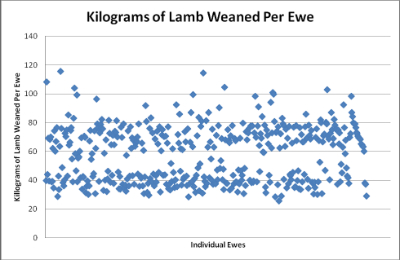Capturing pregnancy status with EID
Collecting pregnancy data from one year to the next can allow you to understand the fluctuations in conception rates within your ewes. This can help to provide:
- feedback on your management — to work out how much of the variation in performance is due to factors that are in your control
- opportunities to apply selection pressure relating to conception — so you can manage your best performers and have them deliver for you every year.
Feedback on your management
If a significant number of your ewes are scanning with twins in one year, and singles in the next, it may be the result of your twin-bearing ewe management.
To allow a twin-bearing ewe the best opportunity to express that potential again in the following year, she will require appropriate nutrition throughout her late pregnancy, lactation, and through to joining. She will also need time to recover and a chance to replenish her energy stores, meaning that an appropriately timed weaning is an important component of the system.
Applying selection pressure

As soon as you know the performance of individual animals you can start to apply selection pressure to lift the overall performance of the mob. This might simply be to identify the:
- passengers within the system
- superior performers to form the basis of your breeding future
Whichever is the case, knowing the pregnancy status of an individual ewe can tell you a lot about her likely contribution to the success of your sheep operation.
This is especially relevant if you know that your management has allowed each ewe the best possible opportunity to express her potential.
Taking the data to the next level
Pregnancy status alone will provide you with information on a ewe's potential performance, but not actual performance. It's more valuable to know which ewes produce the most (or least) kilograms of lamb each year.

To do this:
- Use Pedigree MatchMaker to estimate associations between ewes and their lambs, and trace individual animal pedigree.
- Record individual weaning weights to rank ewes in a flock based on kilograms of lamb weaned.
With this information, the producer can:
- rank the flock based on kilograms weaned
- cull the worst performers
- capitalise on the most profitable sheep
The graph shows the wide variation between ewes in a flock.